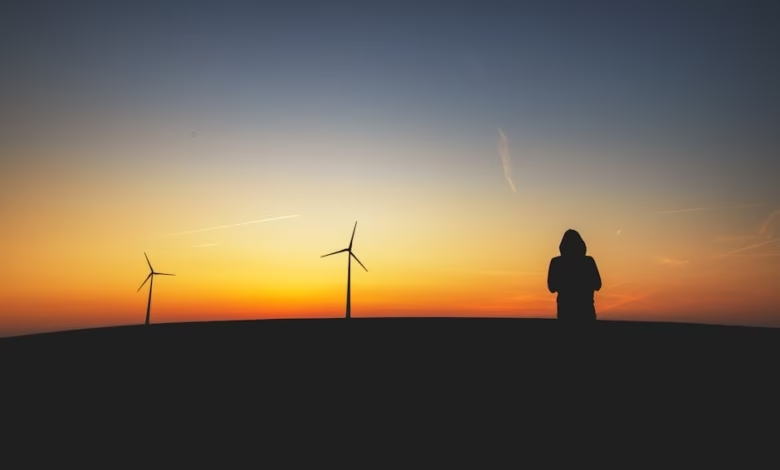Harnessing the Power of Water: The Essential Role of Hydropower in the Energy Transition and Future Innovations

As the world grapples with the pressing need for sustainable solutions to combat climate change, hydropower emerges as a pivotal player in the renewable energy landscape. Harnessing the power of flowing water, hydropower not only contributes to energy efficiency but also plays a crucial role in the global energy transition away from fossil fuels and toward greener alternatives. This article delves into the multifaceted aspects of hydropower, exploring its significance as a clean energy source and its position in energy markets influenced by evolving energy policies.
We will examine hydropower's contribution to energy security compared to fossil fuels and nuclear energy, highlighting its potential in mitigating climate change impacts. Additionally, we will explore the latest innovations in hydropower technology, focusing on enhancements in energy storage and efficiency that are essential for a sustainable future. By understanding these dynamics, we can better appreciate hydropower's role in shaping global energy trends and investments while positioning it as a cornerstone of a diversified energy portfolio that includes solar power, wind energy, and emerging technologies like hydrogen energy and smart grids. Join us as we navigate the complexities of hydropower and its vital contributions to a resilient energy future.
- 1. The Role of Hydropower in the Renewable Energy Landscape: A Solution for Energy Transition
- 2. Comparing Hydropower with Fossil Fuels and Nuclear Energy: Impacts on Energy Security and Climate Change
- 3. Innovations in Hydropower: Enhancing Energy Efficiency and Storage for a Sustainable Future
1. The Role of Hydropower in the Renewable Energy Landscape: A Solution for Energy Transition
Hydropower plays a crucial role in the renewable energy landscape, serving as a reliable solution for the ongoing energy transition. As countries worldwide strive to reduce their reliance on fossil fuels and move toward green energy, hydropower stands out as one of the most established and efficient forms of renewable energy. Unlike fossil fuels, which contribute significantly to climate change through greenhouse gas emissions, hydropower generates electricity by harnessing the energy of flowing water, providing a clean and sustainable alternative.
In recent years, global energy trends have shown a significant shift toward renewable sources, with hydropower accounting for approximately 16% of the world’s electricity production (International Hydropower Association, 2021). This places hydropower alongside solar power and wind energy as key players in the renewable energy sector. Furthermore, hydropower facilities can offer energy storage solutions, helping to balance energy supply and demand in energy markets. This is particularly important as the integration of variable renewable sources like solar and wind energy increases.
The energy transition is not just about transitioning from fossil fuels to renewable sources; it also involves enhancing energy efficiency and ensuring energy security. Hydropower contributes to these goals by providing a stable source of energy that can be adjusted to meet fluctuations in demand, enhancing the reliability of smart grids. Additionally, the ability of hydropower plants to provide baseload power complements other renewable sources, making it an essential component of a diversified energy portfolio.
Furthermore, hydropower is also critical in energy policy discussions, particularly in terms of energy investment. Governments are increasingly recognizing the importance of investing in renewable energy infrastructure, including hydropower, to combat climate change and achieve energy independence. This investment aligns with the global push for energy R&D that focuses on innovations in energy storage and distribution, which will be necessary as the energy landscape evolves.
As countries aim to meet their carbon capture goals and reduce carbon footprints, hydropower can help facilitate this transition by providing a low-emission alternative to traditional thermal energy sources. Moreover, with the rise of electric vehicles and the push for hydrogen energy, the need for reliable and efficient renewable energy sources like hydropower becomes even more critical.
In summary, hydropower is not only a vital player in the renewable energy landscape but also a key solution for achieving a successful energy transition. As we navigate the complexities of energy economics, energy imports and exports, and the challenges posed by climate change, the role of hydropower continues to be paramount in ensuring a sustainable and secure energy future.
References:
International Hydropower Association. (2021). Hydropower Status Report 2021. Retrieved from [link]
2. Comparing Hydropower with Fossil Fuels and Nuclear Energy: Impacts on Energy Security and Climate Change
Hydropower stands out as a critical player in the global energy landscape, particularly when compared with fossil fuels and nuclear energy. Each of these energy sources presents unique implications for energy security and climate change, which are increasingly crucial in today’s energy markets.
Fossil fuels, including coal, oil, and natural gas, are traditionally the backbone of energy supply worldwide. However, their extraction and combustion contribute significantly to greenhouse gas emissions, exacerbating climate change. In contrast, hydropower is a renewable energy source that generates electricity by harnessing the kinetic energy of flowing water, resulting in minimal emissions. This positions hydropower as a vital component of the energy transition, helping to reduce dependence on fossil fuels and mitigate climate change impacts.
Nuclear energy, while low in direct carbon emissions, presents different challenges. The concerns surrounding nuclear waste, potential accidents, and high initial energy investment often make it a contentious option within energy policy discussions. When evaluating energy security, hydropower offers a more reliable and flexible solution. It provides energy storage capabilities through reservoir management, which can help balance supply and demand, especially as smart grids and distributed energy systems become more prevalent.
Moreover, hydropower plants can be integrated with other green energy sources, such as solar power and wind energy. This integration enhances energy efficiency and promotes energy innovations, helping to create a more resilient energy infrastructure. As global energy trends shift towards cleaner alternatives, the role of hydropower becomes increasingly significant, particularly in regions rich in water resources.
In summary, while fossil fuels and nuclear energy have played instrumental roles in shaping energy landscapes, hydropower emerges as a sustainable alternative. With its low environmental impact, ability to provide energy security, and capacity for energy storage, hydropower is crucial for advancing energy R&D and achieving long-term climate goals. The ongoing investment in hydropower infrastructure can drive forward the energy transition necessary for a sustainable future, making it an indispensable asset in the fight against climate change.
3. Innovations in Hydropower: Enhancing Energy Efficiency and Storage for a Sustainable Future
Innovations in hydropower are playing a crucial role in enhancing energy efficiency and storage, paving the way for a sustainable future. As the world transitions from fossil fuels and nuclear energy to renewable energy sources, hydropower stands out as a reliable and adaptable solution. Recent advancements in technology are not only improving the efficiency of hydropower plants but also enabling better integration with energy markets and smart grids.
One significant innovation is the development of pumped-storage hydropower, which allows excess energy generated from sources like solar power and wind energy to be stored in the form of potential energy. During periods of high energy demand, this stored water can be released to generate electricity, effectively acting as a large-scale energy storage solution. This capability is vital for energy security and supports the growing use of distributed energy systems and electric vehicles, ensuring a steady supply of green energy even when renewable sources fluctuate.
Another exciting trend is the integration of hydropower with carbon capture technologies. By improving the carbon footprint of energy production, these innovations align with global energy trends aimed at addressing climate change. Furthermore, advancements in turbine technology and materials science are enabling hydropower facilities to operate more efficiently, thus maximizing output while minimizing environmental impacts.
In addition to enhancing energy efficiency, ongoing research and development (R&D) efforts are focused on optimizing hydropower's role in the broader energy transition. This includes exploring offshore energy opportunities, where underwater turbines could harness ocean currents to generate electricity. Such innovations not only diversify energy sources but also contribute to energy exports and imports, supporting energy policy goals aimed at reducing dependence on traditional fossil fuels.
Ultimately, the evolution of hydropower technologies reflects a dynamic shift in energy economics. By investing in energy innovations that enhance hydropower's efficiency and storage capabilities, we are setting the stage for a resilient and sustainable energy future that balances the demands of global energy markets with the pressing need for climate action.
In conclusion, hydropower stands as a pivotal player in the renewable energy landscape, offering substantial benefits in the energy transition from fossil fuels and nuclear energy toward more sustainable solutions. Its ability to provide consistent energy while supporting energy security and mitigating the impacts of climate change positions it as a crucial component in global energy markets.
As innovations continue to enhance energy efficiency and energy storage capabilities, hydropower can effectively integrate into smart grids, complementing other renewable sources such as solar power and wind energy. The ongoing advancements in energy R&D not only improve the viability of hydropower but also pave the way for a more resilient energy infrastructure that can adapt to evolving energy economics.
Moreover, as countries seek to bolster their energy policies and investments in green energy, hydropower's role will likely expand, providing a reliable source of electricity that supports distributed energy systems and aligns with climate goals. Embracing hydropower, alongside emerging technologies like hydrogen energy and carbon capture, will be essential for nations looking to balance energy imports and exports while fostering a sustainable energy future.
Ultimately, the integration of hydropower into the global energy mix is not just about generating electricity; it’s about fostering an environment where clean, renewable energy can thrive, ensuring a stable and secure energy future for generations to come.





